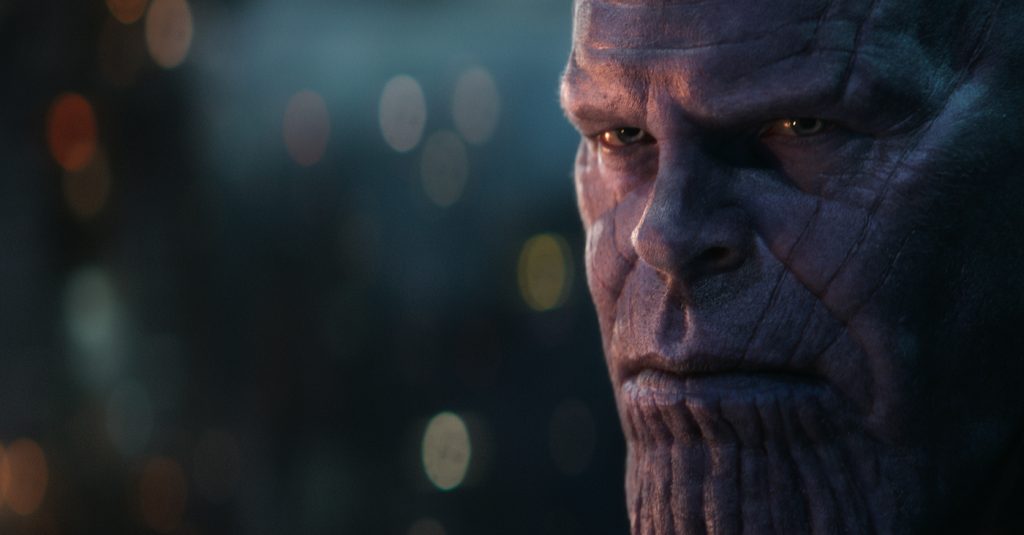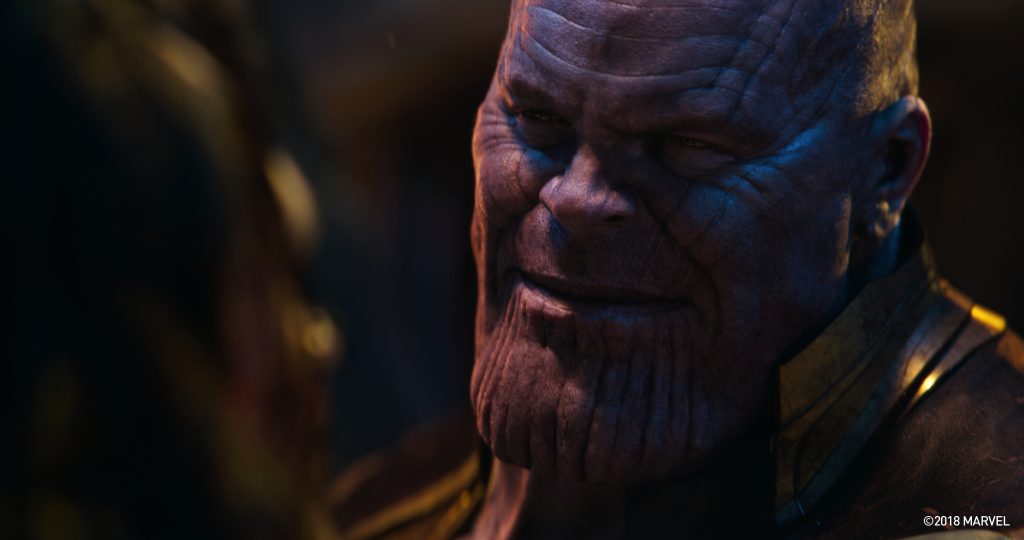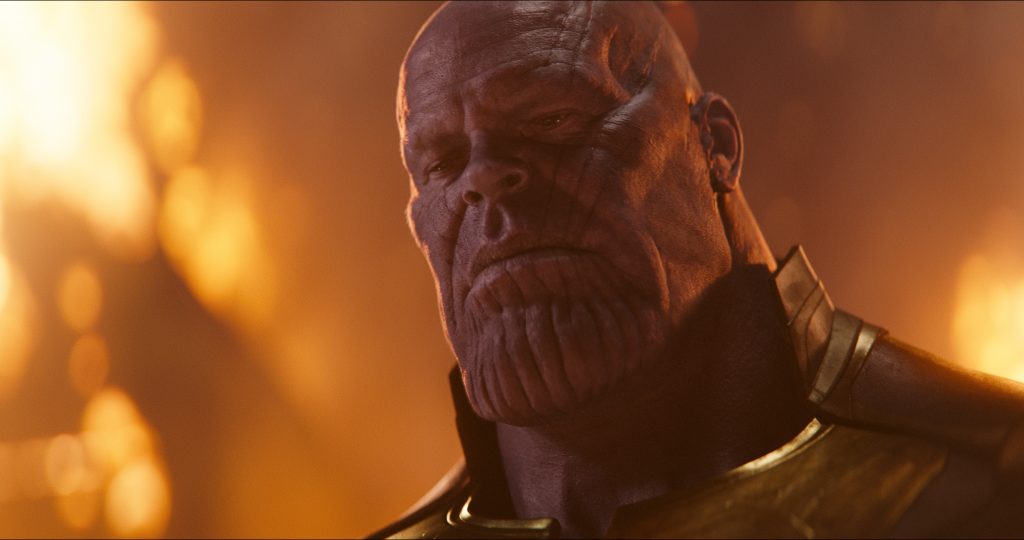How Avengers: Infinity War‘s “Head of Digital Humans” Created the Purple Face of Doom
Darren Hendler‘s been changing live action humans into digital creatures for nearly two decades. Since moving from South Africa to London and finally to Digital Domain in Los Angeles, the former electrical engineer has helped designed CG effects for such spectacles as I, Robot and Furious 7. With Avengers: Infinity War, he focused on the face. Deploying a new motion capture program called Masquerade, Hendler and his team rendered every pore on Josh Brolin’s skin with unprecedented accuracy.
Hendler, who boasts one of the cooler job titles in Hollywood as “Head of Digital Humans,” explains, “We take facial data points from a motion capture session and turn that into roughly 40,000 points of high-res 3D motion data of the actor’s face. We can then map that onto the corresponding spots on Thanos’ face. Masquerade dramatically improved the quality and the subtlety of what we are able to capture from an actor.”

To test the system during Infinity War pre-production, Brolin performed a range of facial expressions captured by a pair of helmet-mounted cameras pointing back at 60 markers that covered his face. The head cams operated at 48 to 60 frames per second, versus the standard 24 FPS, in order to produce extreme density of detail via Disney’s “Medusa” high-res scanning gear. Hendler says, “The high frame rate allows us to get a lot more emotion on the face. When you’re working on digital creatures, the body’s important, but it’s really about getting those expressions on the face.” For the test, Brolin sat on a throne and emoted. “We had Josh do different eye exercises and and he also performed lines of dialogue with the directors.”
From this raw material, Hendler and his team fashioned a short film that transformed Brolin into Thanos. The proof of concept was delivered to directors Joe and Anthony Russo just before production began. Hendler says, “The key thing is that our piece showed that the subtlety of his performance was going to come through as Thanes, so Josh didn’t need to over-act.”
Once the production pipeline kicked in, Hendler and his colleagues taught the computers to customize the Brolin-to-Thanos transformation, shot by shot. “We used machine learning to train the system,” he explains. “For example, when Josh smiles, we want Thanos to have a much wider smile so we feed these corrections on top of the system as we make the transfer between the two faces: ‘We want Josh’s smile to come through a little wider as Thanos.’ Thanos is somewhat stylized so we wanted his expressions to stay true to the vision of Marvel’s concept art.”

Hendler’s department worked with texture supervisor Chris Nichols to develop a credible-looking purple skin for Thanos and fine-tuned the scars on Thanos’ face so they’d move in a natural way. “It was interesting to deal with the scars because it’s actually a very complicated process,” Hendler says. “The way the scar tissue reacts, you have to stretch and squash it in different ways get the scars to move until suddenly, it just looks right.”

Hendler, who studied electrical engineering at University of the Witwatersrand in South Africa as his entry point into computer graphics, points out that his mo-cap collaborators come from all kinds of backgrounds. “Some people are experts in anatomy, others do facial expressions, then you’ve got specialists in hair. It really becomes a team effort to bring all these pieces together and make a character. We sit down together and research scars. We research pores. For Thanos, we looked for all the purple creatures in the world we could find.”
“And the reason it works so well is simply because we’re capturing and using more of the actor’s face.”
Featured image: The VFX team utilized machine learning technology to imbue Thanos with Josh Brolin’s soulful performance. Courtesy Marvel Studios.



